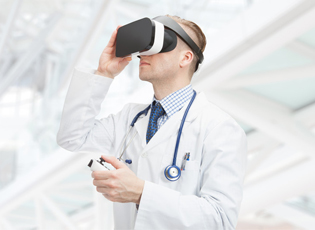 Physicians make use of medical transcription services as well as medical scribes to accurately document patients’ medical records. These strategies have evolved with the adoption of EHRs, and both medical transcriptionists and scribes provide effective EHR-integrated documentation solutions.
Physicians make use of medical transcription services as well as medical scribes to accurately document patients’ medical records. These strategies have evolved with the adoption of EHRs, and both medical transcriptionists and scribes provide effective EHR-integrated documentation solutions.
The electronic health record (EHR) enables physicians to make well-informed treatment decisions quickly and safely. EHRs allow providers to access patient charts remotely, get alerts to critical lab values, receive reminders about preventive care, and much more. However, one main criticism is that EHR data entry by the physician during the office visit has affected their relationship with patients.
This is where scribe services and medical transcription companies have made a mark. One of the main advantages of using these medical documentation strategies is that they free the physician of EHR data entry chores during the office visit, thereby enhancing their bond with the patient.
The latest development in the field of EHR documentation is a Google Glass-powered remote scribe service that can perform up to 3 hours of charting and documentation each day. According to www.news-medical.net, the Augmedix Google Glass based platform “essentially removes the computer keyboard from the patient visit”.
How does this remote clinical documentation solution work? Well, all the physician has to do is wear a pair of smart glasses at the patient encounter. This allows the scribe in the remote location to observe, hear and participate in the consultation, and transcribe the entire encounter real-time.
Besides getting accurate, real-time chart notes of the visit, the physician can retrieve the patient’s medical history, lab notes and pharmacy records during the encounter. This improves physician efficiency and productivity. Most important, with the remote scribe taking care of EHR documentation, the physician can focus on the patient, pay attention to their concerns and deliver a higher level of quality care. Patients can, of course, opt not to use this remote scribe service.
Medical transcription service providers also play a key role in freeing up physicians of their EHR-documentation tasks. While scribes document into structured paper or electronic templates with minimal use of free text, medical transcriptionists provide comparatively detailed verbatim documentation using free text by listening to a recording of the physician’s dictation. This ensures that nothing is missed out. With medical transcription services, physicians benefit from:
- An interface that integrates transcribed notes into the electronic medical record (EMR)
- Data entry into the correct discrete reportable data fields
- Clinical documentation that fulfills Meaningful Use goals and Medicare/Medicaid reimbursement requirements
- Comprehensive and timely EHR-integrated documentation at affordable rates
Besides enhancing physician-patient interaction, both medical transcription services and scribe-based platforms improve office efficiency and save time on charting, allowing physicians to see more patients and focus on meeting their evolving needs.


